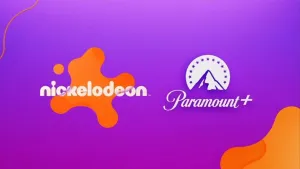In the closing moments of July, the James Webb Space Telescope captured a stunning photo of a nebula in the process of birthing new stars. While the photo is a tremendous achievement in technology in and of itself, eagle-eyed stargazers noticed a perplexing mark in the image. Located near the nebula in question is a group of stars, or maybe even a distant galaxy perhaps, that’s shaped exactly like a question mark.
Videos by ComicBook.com
According to members of the Space Telescope Science Institute (STScI) in Baltimore, the question mark-looking object could be a galaxy that’s being distorted by other nearby galaxies.
“It is probably a distant galaxy, or potentially interacting galaxies (their interactions may have caused the distorted question mark-shape),” representatives of STScI told Space.com. “This may be the first time we’ve seen this particular object. Additional follow-up would be required to figure out what it is with any certainty. Webb is showing us many new, distant galaxies — so there’s a lot of new science to be done!”
Illinois State University physical professor Matt Caplan echoes the sentiment, saying it could be two galaxies in the process of merging, thus resulting in the distortion.
“The two distinct features could easily be merging galaxies in the background, with the upper part of the question mark being part of a larger galaxy getting tidally disrupted,” Caplan told the website. “Given the color of some of the other background galaxies, this doesn’t seem like the worst explanation. Despite how chaotic mergers are, double lobed objects with curvy tails extending away from them are very typical.”
What is the Webb Space Telescope?
In short, the Webb observatory is the successor to the Hubble Space Telescope. Using its new technology, scientists have been able to examine parts of the known universe previously unobservable.
“If you think about that, this is farther than humanity has ever moved before,” NASA administrator Bill Nelson previously said of the JWST. “And we’re only beginning to understand what Webb can and will do. It’s going to explore objects in the solar system and atmospheres of exoplanets orbiting other stars, giving us clues as to whether potentially their atmospheres are similar to our own.”
“Our goals for Webb’s first images and data are both to showcase the telescope’s powerful instruments and to preview the science mission to come,” astronomer Klaus Pontoppidan, Webb project scientist at STScI, added of the images. “They are sure to deliver a long-awaited ‘wow’ for astronomers and the public.”
For additional space and cosmic stories, check out our ComicBook Invasion hub here.








